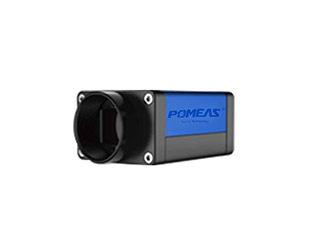Industrial cameras play a vital role in industrial automation and precision manufacturing. This article takes a look at the functions of industrial cameras and how they are used in modern industry.

High-speed capture and real-time processing
The primary function of an industrial camera is to capture images at high speed. On a production line, where products pass through the camera at breakneck speeds, industrial cameras must be able to capture clear images in an instant. In addition, real-time processing capabilities are key for industrial cameras, which need to quickly analyse image data to provide instant feedback to automated control systems.
High Resolution Imaging
Industrial cameras offer high-resolution imaging capabilities to ensure that even minute details are clearly captured. This is critical for applications such as precision measurement, defect detection and quality control. High resolution not only means more pixels, but also finer image quality and higher measurement accuracy.
Accurate colour reproduction
The colour reproduction capability of industrial cameras is particularly important in applications that require colour recognition and classification. High-quality industrial cameras capture and reproduce colours accurately, ensuring accurate colour detection, which is vital in industries such as food packaging and pharmaceutical identification.
Flexible interface options
Industrial cameras are often available with a variety of interface options such as GigE, Camera Link, USB, etc. to suit different industrial environments and system integration needs. These interfaces provide high-speed data transfer capability, ensuring that image data can be transferred to the processing system quickly and consistently.
Powerful Software Support
Industrial cameras are not just hardware devices, their supporting software is equally important. The software provides functions for image acquisition, processing, analysis and archiving, and supports users in customising algorithms for automated detection and analysis according to specific applications.
Environmental Adaptability
Industrial environments are often complex and variable, including high temperature, low temperature, humidity, dust and so on. Industrial cameras need to have good environmental adaptability, able to work stably in a variety of environments to ensure that image quality is not affected.
Multi-spectral imaging capabilities
Some special applications require industrial cameras with multi-spectral imaging capabilities, such as ultraviolet or infrared imaging. This enables industrial cameras to detect features that cannot be directly observed by the human eye, and is widely used in material analysis, night vision surveillance and other fields.
Machine Vision Integration
Industrial cameras are one of the core components of a machine vision system. They work in tandem with other components such as lenses, light sources, image processing software, etc. to form a complete machine vision solution for automated detection, measurement, identification and classification.
Product recommendation
TECHNICAL SOLUTION
MORE+You may also be interested in the following information
FREE CONSULTING SERVICE
Let’s help you to find the right solution for your project!


 ASK POMEAS
ASK POMEAS  PRICE INQUIRY
PRICE INQUIRY  REQUEST DEMO/TEST
REQUEST DEMO/TEST  FREE TRIAL UNIT
FREE TRIAL UNIT  ACCURATE SELECTION
ACCURATE SELECTION  ADDRESS
ADDRESS Tel:+ 86-0769-2266 0867
Tel:+ 86-0769-2266 0867 Fax:+ 86-0769-2266 0867
Fax:+ 86-0769-2266 0867 E-mail:marketing@pomeas.com
E-mail:marketing@pomeas.com
